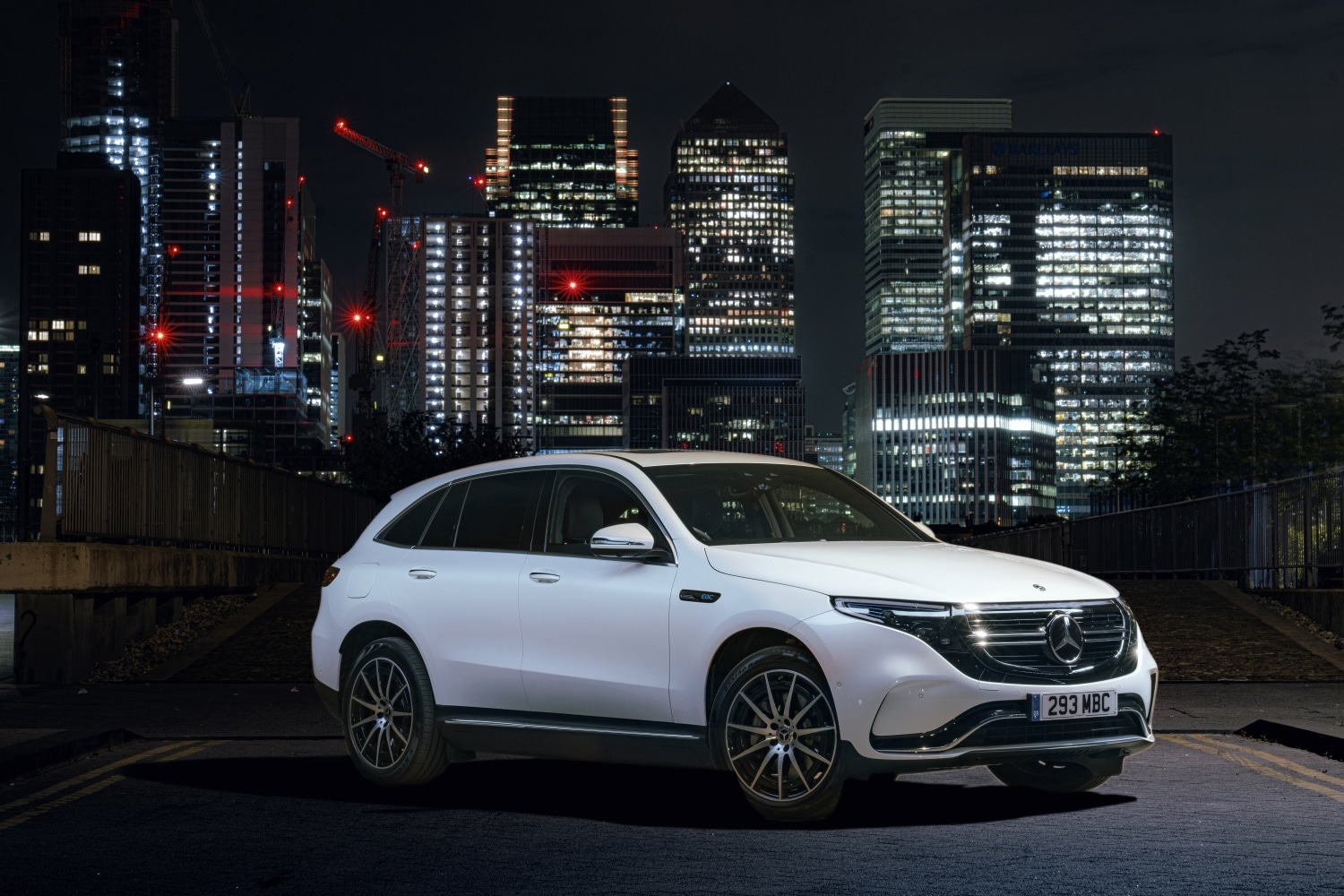
As electric vehicles become more widely adopted, resale value is emerging as a critical factor for both private buyers and fleet managers. In markets where electric vehicle (EV) adoption is accelerating, a widening gap is appearing between models that hold their value and those that depreciate rapidly.
New data from the UK illustrates this dynamic and provides a benchmark to examine how used EVs perform in other major markets including Germany, the US, the UAE and India.
UK: Mercedes Leads, Tesla Lags
According to data compiled by The Electric Car Scheme using AutoTrader listings of used cars and applying an exponential depreciation model, the average used EV in the UK loses around 12.92% of its value each year. However, there is significant variation depending on the model.
The Mercedes-Benz EQC had the lowest depreciation in the UK study, dropping just 5.99% per year. Honda’s compact Honda E and the Volkswagen e-Golf also held their value well, both with annual depreciation rates below 7%. By contrast, the Tesla Model Y was the worst performer, losing 18.54% of its value each year, followed closely by the Hyundai IONIQ 5.
Only 11 of the 68 electric models analysed had an annual depreciation rate below 10%, including models from BYD, BMW, Lotus, Lexus and Smart, as well as several other Mercedes-Benz EVs.
UK: EVs with the Best and Worst Value Retention
|
Rank |
Make |
Model |
Years |
Annual Depreciation |
|
1 |
Mercedes-Benz |
EQC |
2019–2023 |
5.99% |
|
2 |
Honda |
Honda E |
2020–2022 |
6.57% |
|
3 |
Volkswagen |
e-Golf |
2018–2020 |
6.92% |
|
4 |
BYD |
Dolphin |
2023–2025 |
7.24% |
|
5 |
Smart |
forfour |
2020–2022 |
7.32% |
|
… |
… |
… |
… |
… |
|
66 |
Hyundai |
IONIQ 5 |
2021–2025 |
18.52% |
|
67 |
BMW |
iX |
2021–2025 |
17.34% |
|
68 |
Tesla |
Model Y |
2022–2025 |
18.54% |

The Mercedes-Benz EQC came out top in The Electric Car Scheme’s UK depreciation analysis.
Germany: Subsidy Shifts Drive Sharper Losses
In Germany, EVs depreciate significantly faster than in the UK. Data from residual value tracking firms shows that a three-year-old EV typically retains just 37–48% of its original value. This translates to average annual depreciation rates of over 20% in many cases.
Generous subsidies between 2020 and 2022 led to a spike in EV purchases, followed by reduced demand and steeper used prices after incentive cuts. Rapid technological improvements have also made older models less competitive.
Germany: Estimated Value Retention of Key EV Models
|
Model |
3-Year Residual Value |
Approx. Annual Depreciation |
|
Audi e-tron |
~50–55% |
~15–17% |
|
Porsche Taycan |
~55–60% |
~13–15% |
|
VW ID.3 / ID.4 |
~45–50% |
~17–19% |
|
BMW i3 |
~40–45% |
~18–20% |
|
Renault Zoe |
~38–45% |
~19–21% |
|
VW e-Golf / e-Up |
~35–42% |
~20–22% |
|
Tesla Model Y |
~37% |
~20%+ |
United States: Tesla Dominates A Volatile Market
In the US, depreciation rates for EVs are the highest of any vehicle category. iSeeCars data shows an average five-year depreciation of 58.8% for EVs, or about 15% per year on a compound basis. Tesla leads the used EV market by volume, but its pricing strategies have led to sharp value drops in some models.
Tesla’s price reductions in 2023–24 accelerated losses in resale value, particularly for Model 3 and Model Y vehicles. Other widely resold models include the Chevrolet Bolt, Ford Mustang Mach-E, and Nissan Leaf.

Price-cutting by Tesla has had an effect on resale values in the US.
USA: 5-Year Depreciation of Top Used EVs
|
Model |
5-Year Depreciation |
Approx. Annual Rate |
|
Tesla Model 3 |
55.9% |
~13–14% |
|
Hyundai Kona Electric |
58.0% |
~14% |
|
Tesla Model Y |
60.8% |
~15% |
|
Kia Niro EV |
59.2% |
~14% |
|
Tesla Model X |
63.4% |
~16% |
|
Tesla Model S |
65.2% |
~17% |
UAE: Premium EVs Retain Value
In the UAE, premium electric models show stronger value retention. Dubizzle data and market analysts estimate that models like the Porsche Taycan and Lotus Eletre R retain around 80% of their value after three years. Tesla’s Model X also performs well, holding 72–75% over the same period.
The used EV market is growing, with increasing listings of Tesla, Porsche, BMW, Audi, Lucid, and emerging interest in more affordable models like those from BYD, MG, and Hyundai.
UAE: 3-Year Value Retention of Premium EVs
|
Model |
3-Year Residual Value |
Approx. Annual Depreciation |
|
Porsche Taycan |
80–82% |
~6–7% |
|
Lotus Eletre R |
~79% |
~7% |
|
Tesla Model X |
72–75% |
~9–10% |
|
Tesla Model 3/Y |
~70% |
~10–11% |
|
Audi / BMW EVs |
~60–70% |
~12–15% |
India: Resale Confidence Still Low
India’s EV resale market remains nascent, with relatively high depreciation rates. EVs retain just over 50% of their original value after three years, compared to 60% for ICE vehicles. Concerns around battery life, charging infrastructure, and evolving technology contribute to lower resale values.
Tata’s Nexon EV leads the market and has begun showing better retention rates, especially with extended warranties. However, most EVs in India still depreciate faster than their petrol counterparts.
India: Estimated Depreciation of Common EVs
|
Model |
3-Year Residual Value |
Approx. Depreciation |
|
Tata Nexon EV |
~70–75% |
~8–10% |
|
MG ZS EV |
~55–60% |
~13–15% |
|
Mahindra XUV400 |
~55% |
~15% |
|
Tata Tigor EV |
~50–55% |
~15–17% |
|
Hyundai Kona EV |
~50–55% |
~15–17% |

The market in India is nascent, but looks likely to accelerate.
Global Context: Technology and Incentives Shape Value
The differences in depreciation across these markets reflect both the maturity of the EV ecosystem and the structure of government incentives.
In the UK and UAE, where infrastructure is well-developed and models are often leased or bought under salary sacrifice schemes, depreciation is less severe.
In Germany and the US, volatile policy changes and aggressive new pricing have contributed to sharper drops in resale value.
Meanwhile, in India, the lack of long-term data, infrastructure and buyer confidence continues to suppress used EV prices. However, the overall trend across markets is clear: certain models, especially those with reliable battery performance, desirable features and strong brand support, are better at retaining value.
As more consumers consider total cost of ownership rather than just upfront price, depreciation data is becoming a crucial part of the decision-making process.
Here’s the summary:
| Rank | Country | Average Annual EV Depreciation | Notes |
| 1 | Germany | 20–22% | Driven by subsidy cuts, tech churn, and oversupply in a mature market |
| 2 | USA | ~15% | Tesla price volatility and new incentives have accelerated depreciation |
| 3 | India | ~13–17% | Early-stage market with buyer uncertainty and infrastructure gaps |
| 4 | UK | ~13% | Stable depreciation patterns with some standout models below 10% per year |
| 5 | UAE | 6–10% | Premium-focused market with strong residuals for high-end EVs like Taycan and Eletre |
Looking Ahead
These findings highlight how uneven the EV transition remains when it comes to resale value. While some models are quickly depreciating, others are proving to be reliable investments. For buyers, fleet managers and policymakers, understanding these dynamics is key to supporting a sustainable and financially viable EV market.
As markets mature, infrastructure expands and battery performance data becomes more transparent, confidence in used EVs is likely to grow. Until then, prospective buyers would do well to research how specific models perform over time, not just at the showroom, but also on the second-hand market.











